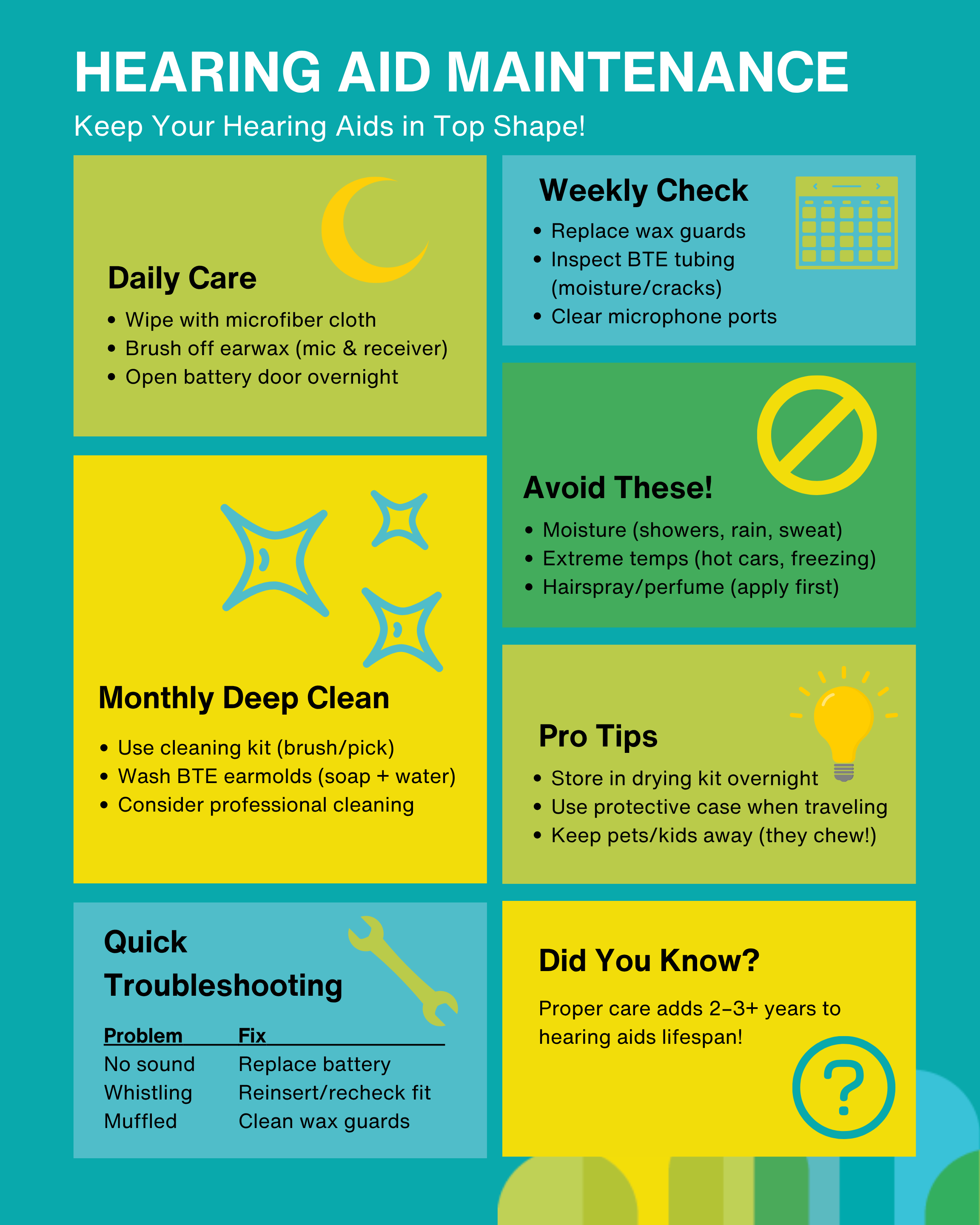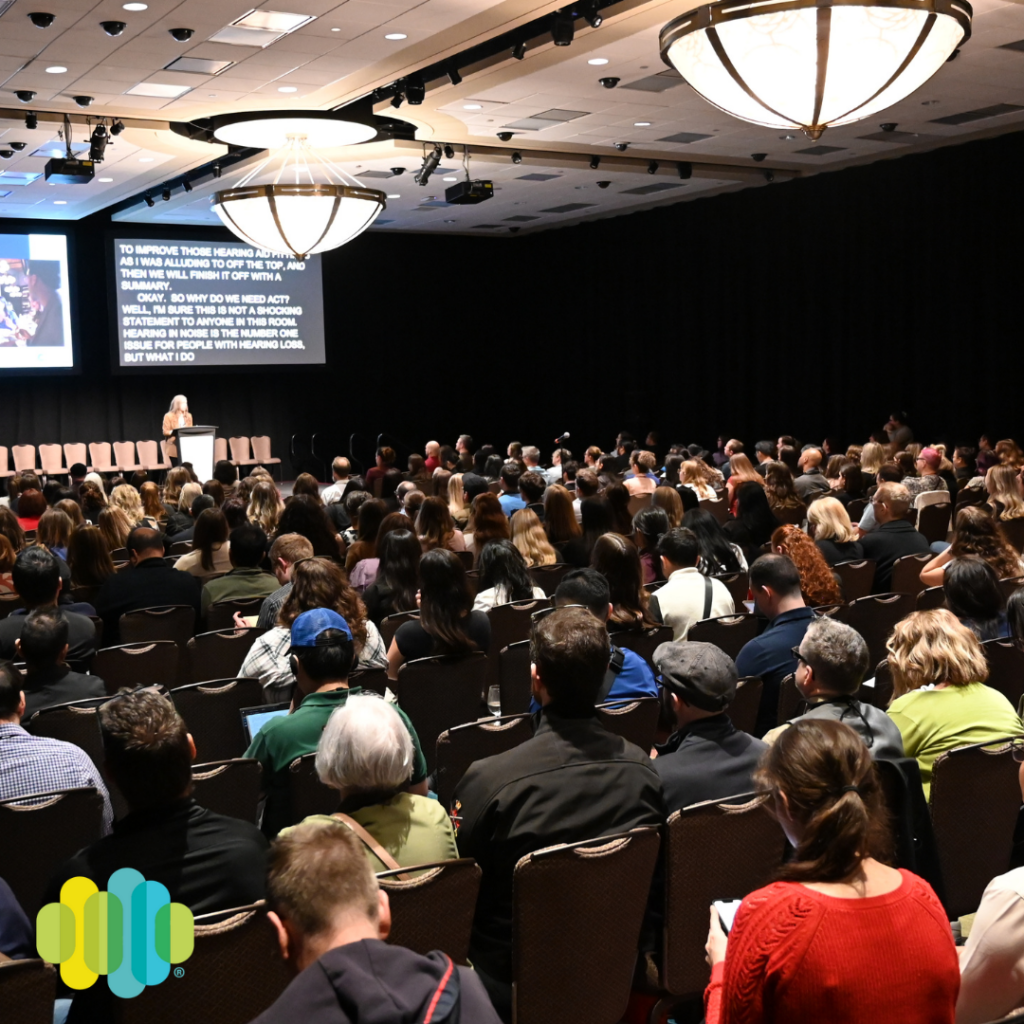Your hearing aids are essential for staying connected to the world, and just like any high-tech device, they need proper care to perform their best. Neglecting maintenance can lead to poor sound quality, frequent repairs, or even premature replacement, costing you time and money. This comprehensive hearing aid maintenance guide covers everything you need to know about hearing aid maintenance, from daily cleaning routines to troubleshooting common issues. Let’s dive in!
___________________________________________
Why Hearing Aid Maintenance Matters
Hearing aids are tiny, sophisticated devices exposed to earwax, moisture, dust, and sweat daily.
Without proper care, these factors can:
✔ Reduce sound quality (muffled or distorted audio)
✔ Shorten battery life (due to corrosion from moisture)
✔ Cause costly repairs (clogged microphones, damaged receivers)
✔ Decrease lifespan (well-maintained aids last 3–5+ years vs. 2–3 without care)
By following a consistent maintenance routine, you’ll ensure:
✔ Clearer sound with no interference
✔ Longer-lasting batteries (or rechargeable performance)
✔ Fewer visits to a hearing healthcare professional for repairs
✔ Maximized investment (avoiding early replacement costs)
__________________________________________
Daily Hearing Aid Care Routine 🌙
- Nightly Cleaning (Essential!)
- Wipe down with a dry microfiber cloth (avoid tissues or paper towels, which can leave lint).
- Use a soft brush to gently remove earwax from:
- Microphone ports
- Receiver (speaker) openings
- Vents (if applicable)
- Open the battery door overnight to:
- Prevent moisture buildup
- Extend battery life (for disposable batteries)
- Moisture Prevention Tips
- If exposed to sweat/humidity, wipe immediately with a dry cloth.
- Avoid wearing in:
- Showers or baths
- Heavy rain (use a waterproof cover if necessary)
- Saunas or steam rooms
- Battery Care (For Disposable Batteries)
- Always wash your hands before handling to avoid oil/dirt transfer.
- Let batteries air out for 1 minute after removing the sticker (activates full power).
- Store in a cool, dry place (not in the bathroom!).
__________________________________________
Weekly Hearing Aid Maintenance 🗓️
- Replace Wax Guards/Filters
- Why? Earwax clogs sound pathways, reducing volume/clarity.
- How often? Every 5–7 days (or sooner if you produce a lot of wax).
- Steps:
- Check your manual for the correct filter type.
- Use the provided tool to remove the old guard.
- Insert a new one carefully (don’t force it).
- Check Tubing (For BTE Hearing Aids)
- Look for:
- Discoloration (yellow/brown = time to replace)
- Moisture inside (use an air blower to dry)
- Cracks or stiffness (replace immediately to avoid breaks)
- Look for:
- Inspect Microphone & Receiver Ports
- Use a magnifying glass & light to check for blockages.
- If clogged, gently brush or use a wax pick (never poke deeply!).
__________________________________________
Monthly Deep Cleaning & Professional Care ✨
- Deep Clean at Home
- Use a hearing aid cleaning kit (brush, pick, and wax loop).
- Disinfect with alcohol-free wipes (if recommended by your brand).
- For BTE models: Detach the earmold and wash with mild soap & water (let dry fully before reattaching).
- Schedule a Professional Cleaning
- Hearing Instrument Specialists have specialized tools to clean internal components.
- Recommended every 3–6 months (or if you notice performance issues).
- Find a practitioner near you.
__________________________________________
Smart Storage Solutions 🔒
- Use a Drying Kit or Dehumidifier
- Best options:
- Electric dehumidifiers (quick drying)
- UV-C light boxes (kills bacteria)
- Silica gel jars (budget-friendly)
- Leave the aid overnight for best results.
- Best options:
- Avoid Extreme Temperatures
- Never leave in:
- Hot cars (can warp components)
- Freezing conditions (batteries drain faster)
- Humid bathrooms (moisture damage)
- Never leave in:
- Always Use a Protective Case
- Prevents:
- Loss (especially when travelling)
- Pet damage (dogs love chewing hearing aids!)
- Accidental drops
- Prevents:
__________________________________________
Troubleshooting Common Hearing Aid Problems 🛠️
Issue |
Possible Cause |
Quick Fix |
No sound |
Dead battery, clogged mic |
Replace battery, clean mic |
Weak volume |
Wax buildup, low battery |
Change the wax guard, check the battery |
Whistling/feedback |
Poor fit, cracked tubing |
Reinsert, inspect the tubing |
Intermittent sound |
Moisture, loose battery |
Dry aids, check battery contacts |
Distorted audio |
Damaged receiver, debris |
Clean, see H.I.S. if it persists |
When to See Your H.I.S.:
- If problems continue after cleaning
- If you notice physical damage (cracks, broken parts)
- If sound is consistently muffled or cutting out
__________________________________________
Pro Tips for Extending Hearing Aid Lifespan 💡
✔ Keep a maintenance kit (brush, wax guards, drying container) in your bathroom.
✔ Avoid hair products (hairspray, gel) near hearing aids—apply first, then insert.
✔ Keep away from pets & kids—hearing aids look like toys to them!
✔ Travel smart—always bring extra batteries, a case, and a dehumidifier.
__________________________________________
Final Thoughts
Your hearing aids are an investment in your quality of life, and a little daily care goes a long way. By following this maintenance routine, you’ll enjoy clearer sound, fewer repairs, and longer-lasting devices.
Need help? Book a professional cleaning with your Hearing Instrument Specialist to keep them in top shape!
Visual Guide: Quick-Reference Maintenance Tips
To make hearing aid care even easier, we’ve created a handy infographic summarizing the key steps from this guide. Save it to your phone or print it for a quick reference!

__________________________________________
About AHIP
The Association of Hearing Instrument Practitioners of Ontario (AHIP) is a professional, non-profit organization that represents H.I.D. (Hearing Instrument Dispensers) and H.I.S. (Hearing Instrument Specialists) in Ontario. AHIP represents and guides its members in their practice in the best interest of the hard-of-hearing of Ontario. AHIP responsibly administers entry to practice, standards of practice and consumer complaint management. Hearing Instruments Specialists (H.I.S.) must be practicing members of AHIP in good standing to maintain authorizer status with the Ministry of Health, Assistive Devices Program.
References
- Association of Hearing Instrument Practitioners of Ontario (AHIP). Help Me Hear. Retrieved from https://helpmehear.ca/
AHIP is not and shall not be liable for any of the views expressed by the authors or advertisers on the Signal Blogs. The authors’ opinions and the advertisers’ content do not necessarily reflect AHIP’s views.




